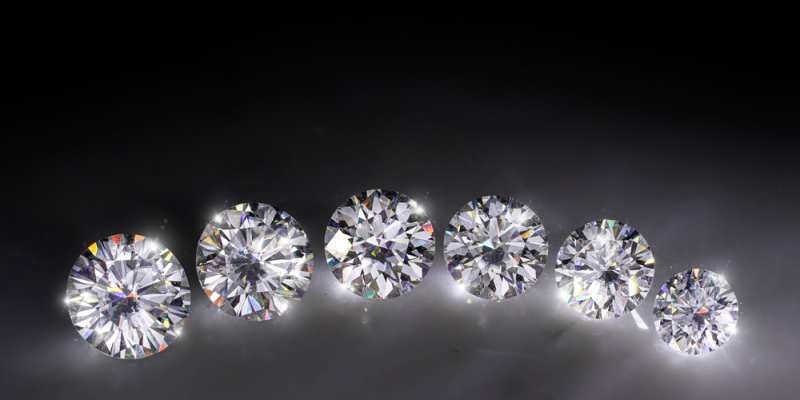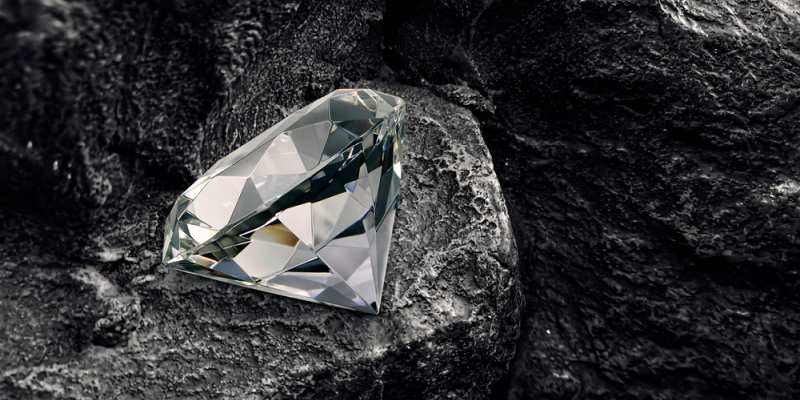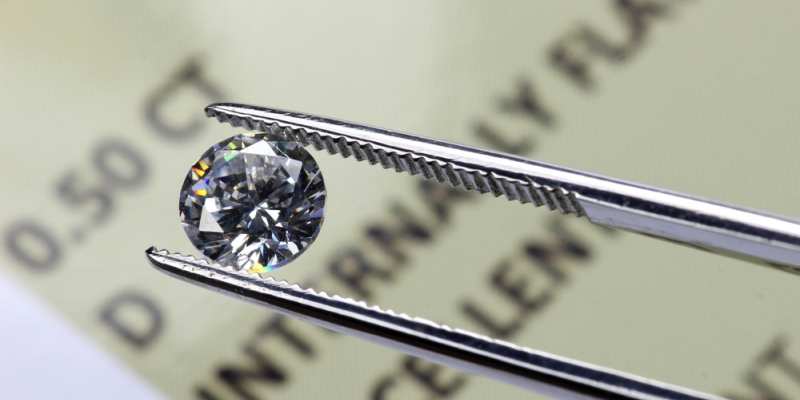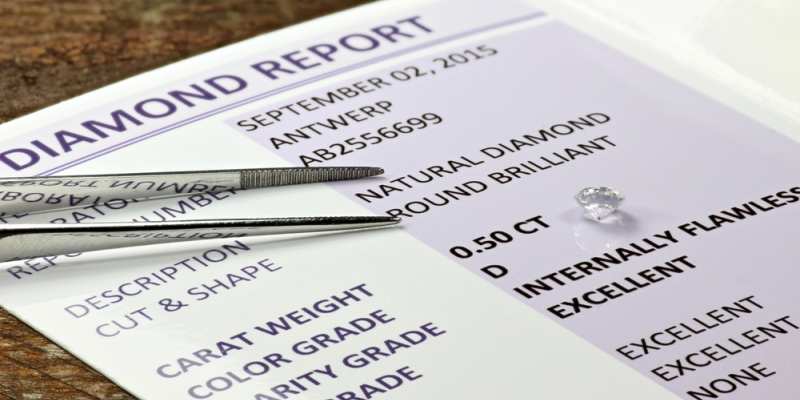There is much to discuss when it comes to determining the value of your diamond, and one important factor is its clarity. This involves understanding where your diamond stands on the diamond clarity chart.
You might think that interpreting or using a clarity chart is complicated, but we assure you that it’s not. Tools like the clarity chart we will discuss today are straightforward and easy to use.
While different clarity charts for diamonds may have some similarities and differences, we will cover them all, so there’s no need to worry!
All you have to do is stay with us until the end and read this entire article to gain a comprehensive understanding of these charts and their significance.
Without any further delay, let’s dive right into the article and explore what we need to know about diamond clarity charts!
DESIGN YOUR OWN ENGAGEMENT RING: START WITH A SETTING OR START WITH A DIAMOND. IT’S REALLY UP TO YOU!

What Is A Diamond Clarity Chart?
In all honesty, a diamond clarity chart may initially appear complex, but that’s not entirely true.
To understand, utilize, and benefit from these charts, let’s start with the basics!
Diamond clarity refers to the visual appearance of a precious stone and is assessed based on the presence of inclusions and blemishes. The fewer imperfections a diamond has, the higher its clarity grade.
A diamond clarity chart is simply a visual representation of the clarity grade assigned to a diamond.
While this definition may not be immediately clear, we’ll break it down and examine each component to enhance your understanding.
Firstly, diamond clarity is a qualitative measurement that places diamonds on a predetermined scale of quality, similar to other measurable qualities.
The visual appearance of a diamond is crucial for its placement on the clarity scale, meaning it’s the primary factor considered when determining its clarity grade.
Inclusions and blemishes are undesirable when evaluating diamond clarity, so a lower presence of these imperfections corresponds to a higher clarity grade.
It’s important to note that clarity charts may vary between different organizations and certificates.
Nearly every diamond certificate provides a clarity grade based on the lab’s assessment of the diamond’s clarity level.
Now, let’s explore the possible grades a diamond can receive and discuss each one:
- FL (Flawless)
- IF (Internally Flawless)
- VVS1 (Very Very Slightly Included 1)
- VVS2 (Very Very Slightly Included 2)
- VS1 (Very Slightly Included 1)
- VS2 (Very Slightly Included 2)
- SI1 (Slightly Included 1)
- SI2 (Slightly Included 2)
- I1 (Included 1)
- I2 (Included 2)
- I3 (Included 3)
These clarity levels and grades are based on GIA standards, but other certification organizations may use different terminology while generally maintaining similar clarity levels.
We understand that these terms may seem unfamiliar to you right now, but don’t worry—we’ll discuss them shortly!
Let’s start from the bottom of the grading chart:
I1, I2, and I3 represent the lowest grades assigned to heavily included diamonds. While it’s not ideal to have these grades for your diamond, remember that even diamonds in these categories can still be beautiful. So, don’t be discouraged if your diamond falls into this range.
SI1 and SI2 grades indicate slightly included diamonds. These diamonds may have slight inclusions but can still exhibit beauty, although their clarity grade places them at a lower price range.
Moving up to the VS1 and VS2 grades, we’re stepping into a better territory. If your diamond is assigned either of these grades, there’s no need to worry. While not the highest clarity grades, they indicate significantly better clarity compared to I or SI graded diamonds.
VVS grades (VVS1 and VVS2) signify even higher clarity levels. If your diamond receives a VVS grade, you should be satisfied with its clarity. These grades rank third among the best clarity grades a diamond can attain.
IF and FL grades are on a completely different level. IF represents Internally Flawless, which signifies nearly perfect diamonds, while FL denotes “flawless,” reserved for the very best diamonds.
The “Flawless” grade itself is the highest possible grade a diamond can achieve. It indicates impeccable clarity and represents the pinnacle of the clarity chart. If you come across an FL-graded diamond or your diamond is graded as FL, you know you have an exceptional gem.
However, it’s important to note that FL-graded diamonds are rare and highly sought after. They are in high demand among collectors, and it can be challenging to find them in the general market.

Why Is Diamond Clarity Important?
We are all aware that certain criteria directly influence the quality and market value of a diamond. Diamond clarity is one of those crucial factors.
When discussing diamond clarity and its impact on price, it is important to mention the 4 C’s of diamonds, which are:
- Carat Weight
- Color Grade
- Clarity
- Cut Grade
These four factors play a significant role, and a diamond’s price cannot be accurately determined without considering the 4 C’s.
Carat weight is a well-known aspect of diamonds, where the rule is simple: the more carats a diamond has, the higher the price tag, even if individuals may not be familiar with the exact measurement of a carat.
Color grade and diamond clarity grade are also crucial determinants of a diamond’s value. The color of a diamond and its clarity greatly influence its worth.
Cut grade is another essential factor, but discussing the intricacies of diamond cutting would require a detailed exploration beyond the scope of our current discussion.
However, diamond clarity is a characteristic shared by all diamonds, regardless of size, cut, or color. Every diamond possesses a level of clarity, which is our main focus today.
The significance of diamond clarity is vast, and one noticeable aspect is its impact on the price. For example, a diamond with an SI1 clarity grade will have a certain price range. However, if you compare a diamond with the same cut and carat weight but with a VVS1 clarity grade, you will observe a price difference of a few hundred dollars.
While this difference may not seem significant at first glance, it is important to note that these distinctions in clarity levels are often not discernible to the naked eye, especially for individuals who have not received specific training to identify specific diamond characteristics.
Now, let’s address some common misconceptions about diamond clarity levels. Do lower clarity grade diamonds appear dull or lackluster?
In reality, clarity levels are determined by the presence of “spots” and “dark areas” on the diamond’s surface or within its structure. When a diamond has fewer of these spots, known as inclusions and blemishes, it is considered to have better clarity, and consequently, it commands a higher price.
It is important to note that if a diamond exhibits relatively large and noticeable dark spots or areas, it will receive a lower clarity grade compared to a diamond with only minor imperfections on or within it.

How Do You Find Out Your Diamond’s Clarity?
It is common for individuals to possess diamonds without knowing their color grade or clarity level right away, and that’s perfectly fine. There are several ways to determine the clarity grade of your diamond, and if you’re fortunate, you can obtain this information within a couple of days.
Two well-known diamond certification authorities are GIA (Gemological Institute of America) and HRD (Hoge Raad voor Diamant). GIA certification is more prevalent in North America, while HRD certification is a popular choice in Europe.
Both certifications provide valuable information about your diamond, including its clarity grade on the diamond clarity chart. While the certification process may involve some complexity and cost, it is truly worthwhile to certify your diamond.
Obtaining a certification, especially a GIA certification, is highly recommended if you plan to sell your diamonds in the future or prefer having documented proof of their authenticity and characteristics.
In our humble opinion, it is advisable to have all diamonds certified and thoroughly examined.

Finalizing Our Thoughts
Taking an interest in diamonds can be quite perplexing, and the diamond clarity chart, as you may have noticed, is one of the most bewildering aspects of diamond information for prospective buyers.
However, as demonstrated in this article, there is nothing inherently inscrutable about these charts. Like any measurable attribute, diamonds have specific levels that can be used to describe their quality.
Depending on the condition and overall quality of your diamond, the certifying organization you trust will assign a rating on the clarity chart.
It is often overlooked by those unfamiliar with diamonds that grading is essential to determine their value. Without certification, buyers cannot verify the authenticity and quality of the gem, and considering the significant investment involved, certification becomes crucial.
Moreover, certifying diamonds helps combat the issue of blood diamonds, ensuring ethical sourcing and distancing oneself from such concerns.
The clarity chart is one of the easiest sections to comprehend on a diamond certificate. So, when you obtain certification for your diamonds, don’t hesitate to examine the certificate and review all the information provided.
This concludes our discussion on the topic. We hope you found our guide to the diamond clarity chart enjoyable and informative, as much as we have enjoyed creating it!


